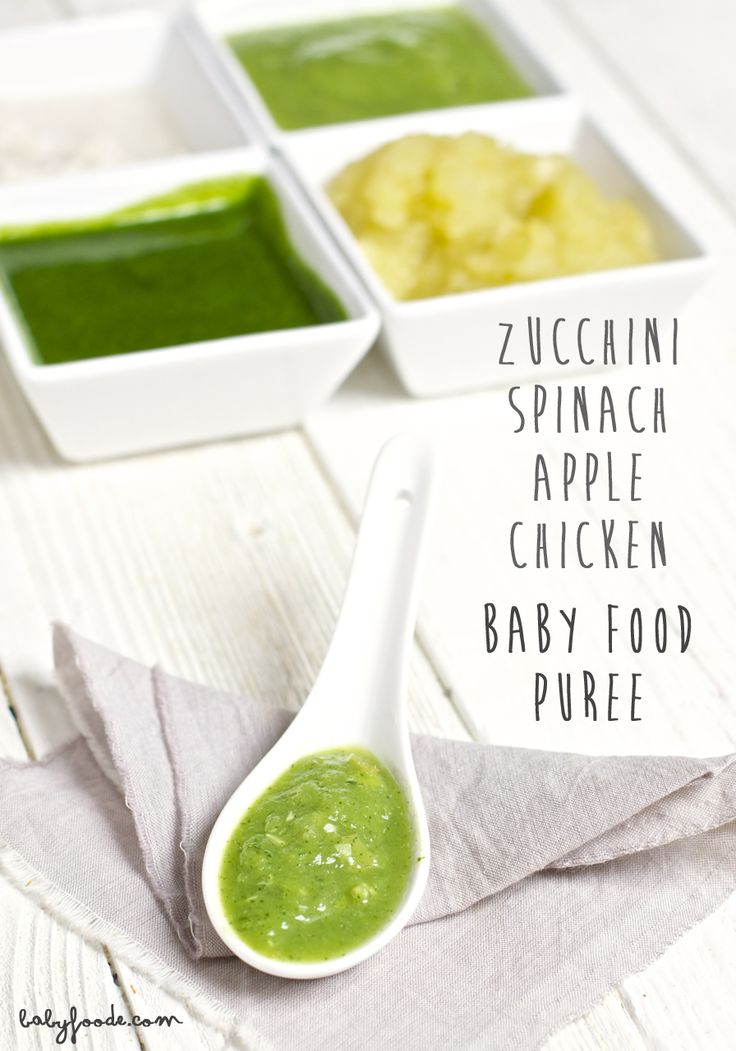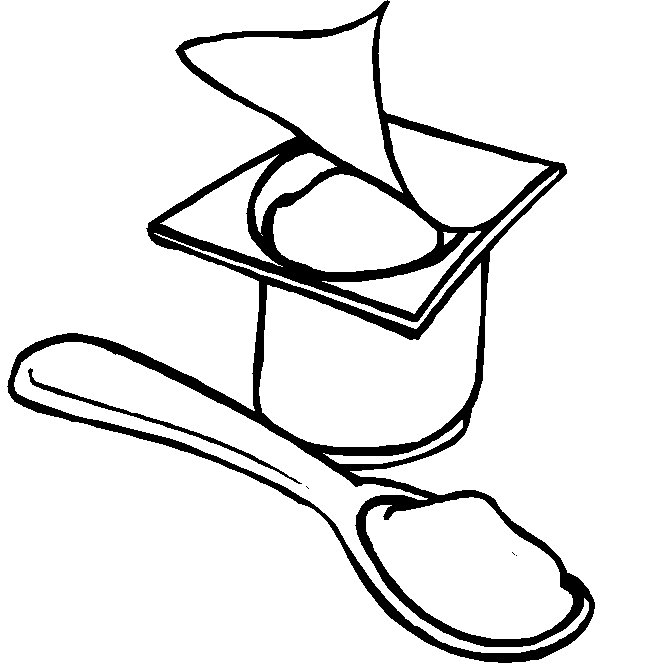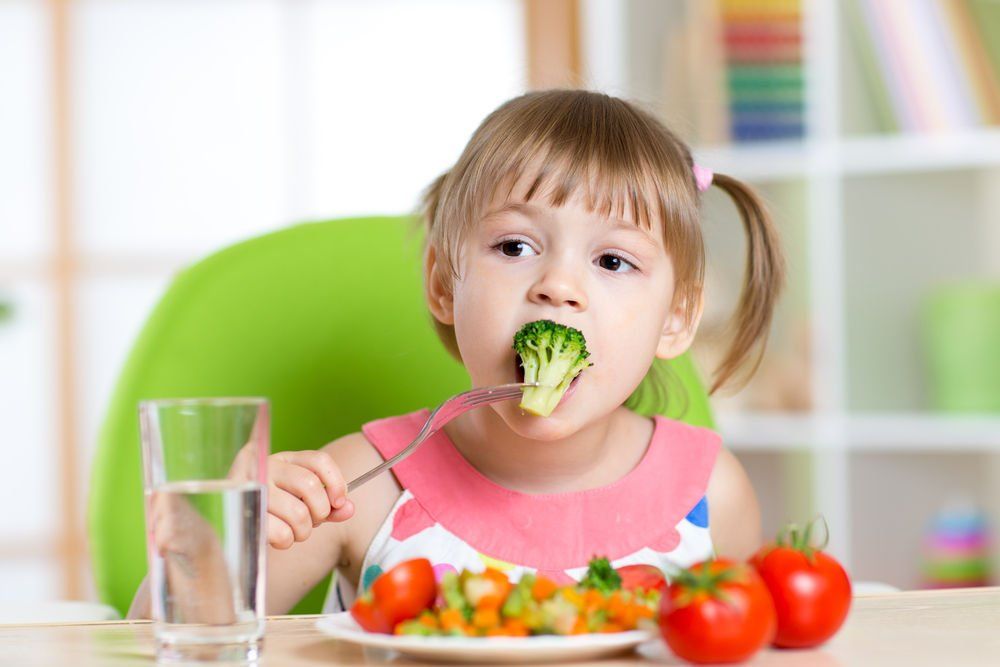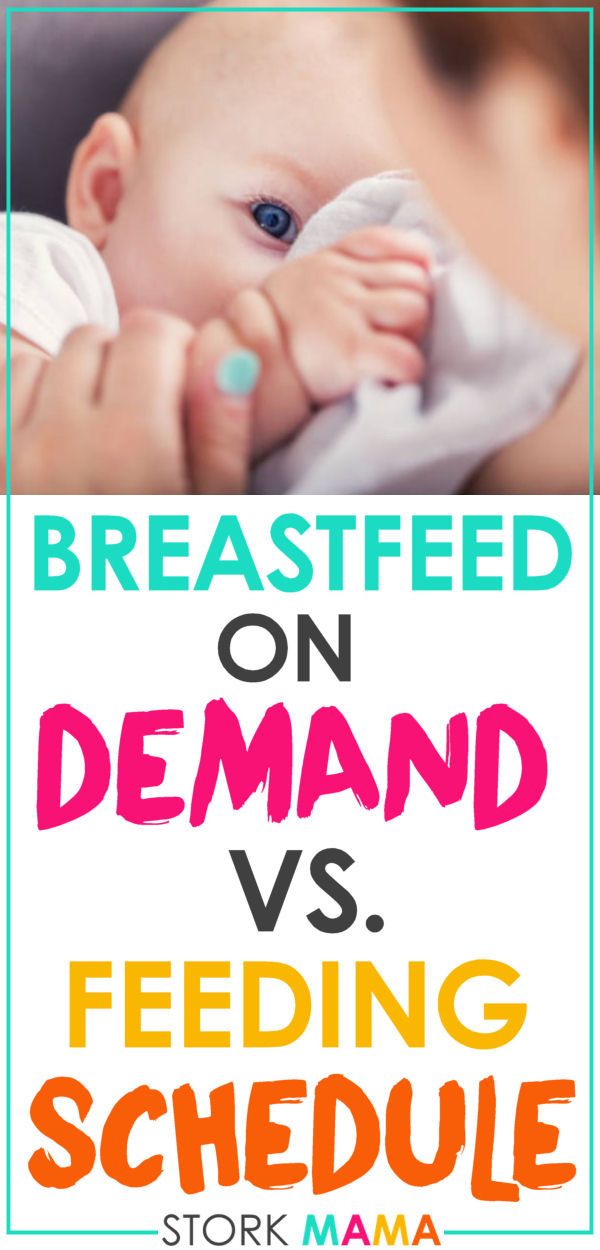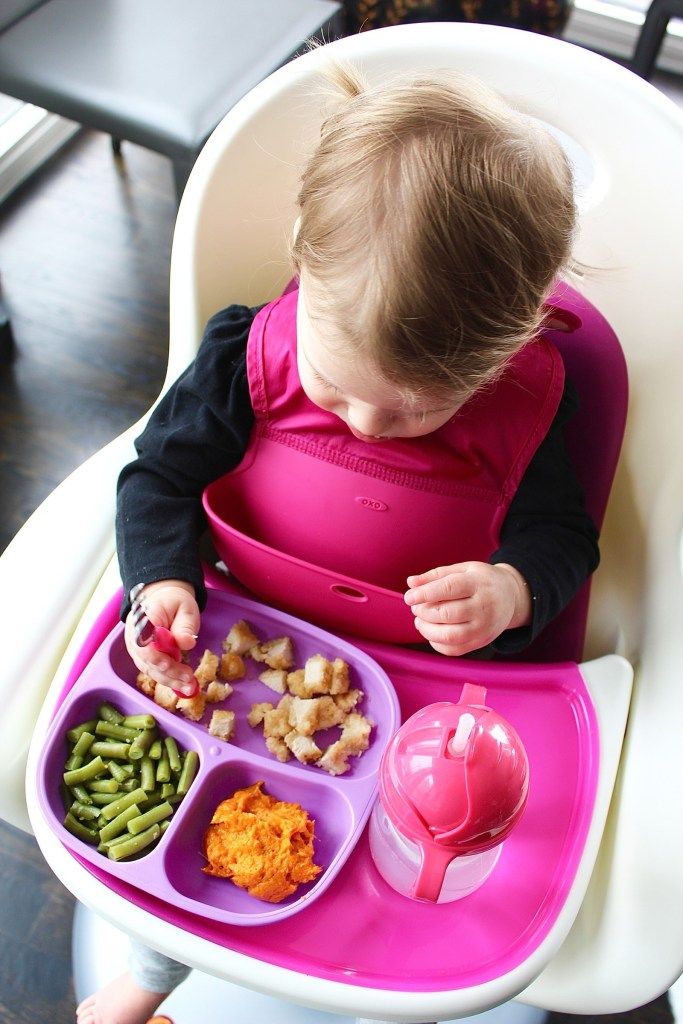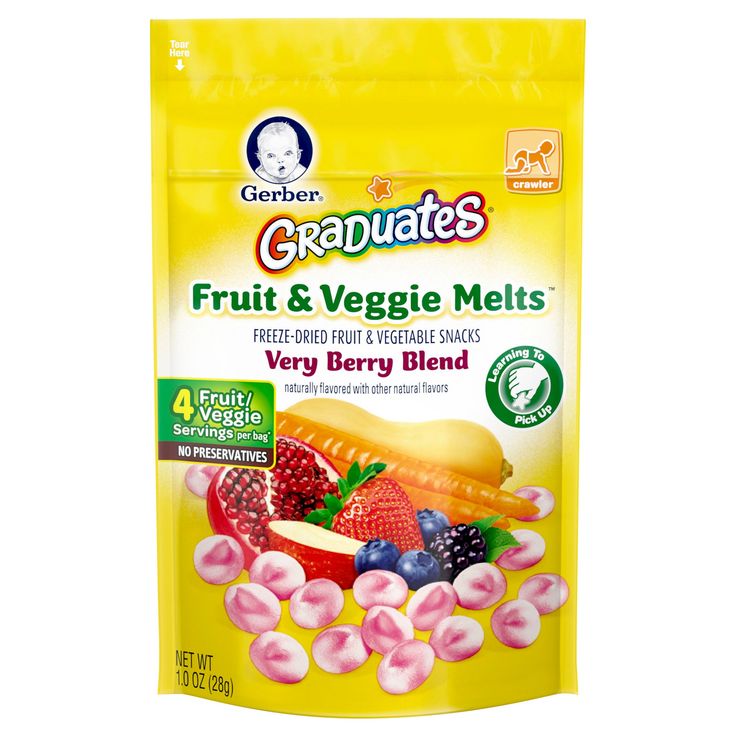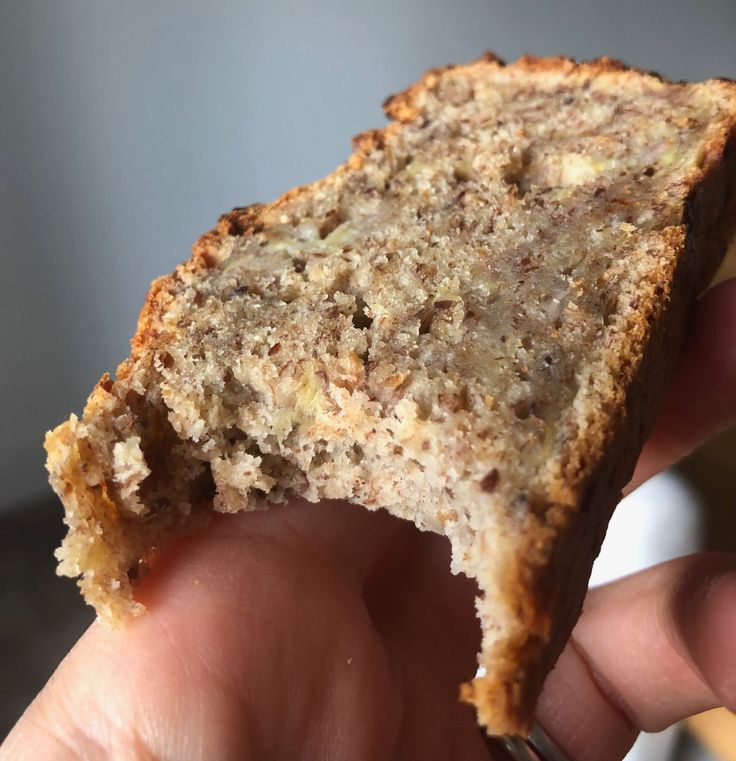Fiber rich baby foods
30 High Fiber Foods for Babies and Toddlers to Feed Your Baby the Right Way
Fiber is an important nutrient that keeps our digestive system running smoothly. Here are the top healthy High Fiber Foods for Babies and Toddlers.
What is Fiber?
Health Benefits of High Fiber Foods:
30 High Fiber Foods for Babies and Toddlers
1. Oatmeal
2. Whole Grain Cereal
3. Apples
4. Pears
6. Avocado
7. Mango
8. Pineapple
9. Prunes
10. Nuts Powder
11. Carrots
12. Beetroot
13. Sweet potatoes
14. Green Peas
15. Beans
16. Leafy Greens
17. Broccoli
18. Yogurt
20. Millet
21. Berries
22. Whole-grain Bread
23. Whole-grain Pasta
24. Brown Rice
25. Barley
26. Whole Grain Cereal
27. Dried Beans
28. Pomegranate seeds
29. Corn
30. Nuts and Seeds
Frequently Asked Questions
What baby foods have the most fiber?
How can I add more fiber to my baby’s diet?
Buy Healthy Nutritious Baby, Toddler food made by our own Doctor Mom !
As parents, we try our best to plan our kids meals so they get all the nutrients they need.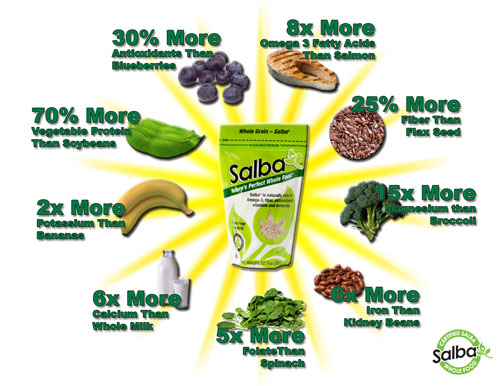 We focus a lot on protein, iron, calcium and healthy fats. However, one thing that often gets missed out is this – fiber. Experts across the board say that for all a healthy digestive system, you need three things – fiber, fluids and fitness. Remove any one of this and you’re in for some trouble – especially in the bathroom!
We focus a lot on protein, iron, calcium and healthy fats. However, one thing that often gets missed out is this – fiber. Experts across the board say that for all a healthy digestive system, you need three things – fiber, fluids and fitness. Remove any one of this and you’re in for some trouble – especially in the bathroom!
What is Fiber?
Fiber is the undigestible part of the plant-based food we eat, like fruits, vegetables, legumes and grains. There are two types of fiber – soluble and insoluble.
- Soluble Fiber can dissolve in water. It slows down digestion, making us feel fuller for longer. Soluble fiber is found in oats, barley, fruits and legumes like beans or peas.
- Insoluble fiber does not dissolve in water. It adds bulk to stool and pushes it through the digestive system, easing elimination from the body. Insoluble fiber is found in wheat bran and grains.
Both kinds of fiber are important for a healthy digestive system. Along with the right amount of water, it ensures easy and regular movements, while also promoting better absorption of nutrients.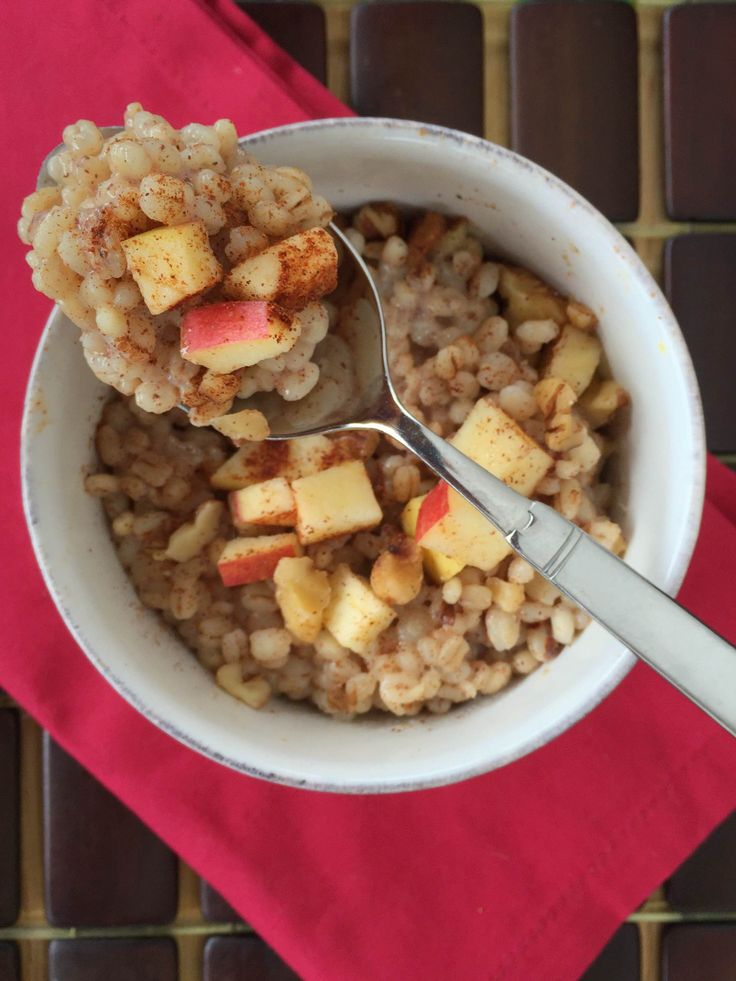
Every person needs 14 grams of fiber for every 1000 calories they consume in a day. For babies, this translates to about 55 to 110 grams of soft cooked high fiber vegetables a day. For older children, this can be broken down as:
- Toddlers (1-3 years old) – 19 grams of fiber a day
- Young Children (4-8 years old) – 25 grams of fiber a day
- Older girls and teens (9-18 years old) – 26 grams of fiber a day
- Older boys (9-13 years old) – 31 grams of fiber a day
- Teen boys (14-18 years old) – 38 grams of fiber a day
If this is hard to remember, a rule of thumb is to add 10 to the child’s age (for children 5 and above). For example a 9 year old would need 19 grams of fiber a day. Ensuring 5 servings of fruits and vegetables a day also helps.
Health Benefits of High Fiber Foods:
- Keeps the digestive system working properly
- Prevents and treats constipation
- Is filling and doesn’t make the child hungry soon
- Prevents overeating and obesity
- Prevents diabetes
- Lowers bad cholesterol
- Prevents heart disease
- Lowers the risk of cancer
- Ensures absorption of nutrients
Besides these benefits, eating high fiber foods for babies and toddlers also prevents nutritional deficiencies, since most fiber-rich foods are rich in minerals vitamins and antioxidants. On the other hand, not having enough fiber can lead to several problems:
On the other hand, not having enough fiber can lead to several problems:
- Firm, hard and dry stools
- Infrequent bowel movements
- Crying when trying to pass stools
- Unwillingness to go to the toilet
- Hard and swollen abdomen
- Abdominal pain
- Low appetite
- Bleeding while pass
In severe cases, this can cause stool retention and impaction with stool leakage.
These problems can be fixed with a diet rich in high fiber foods, sufficient water intake and physical activity. A food is considered a high fiber food if it has at least 3-5 grams per serving. It can be heard to go around calculating the individual fiber content of each food, so we’ve rounded up the top high fiber foods for babies and toddler.
30 High Fiber Foods for Babies and Toddlers
List of high fiber foods for babies and toddlers
1.
OatmealOatmeal is one of the easiest ways to increase the fiber in your little one’s diet. Even babies over 6 months can have oatmeal, and it with 4 grams of fiber in a cup of cooked oatmeal, it’s an excellent choice for school going kids too! Go for organic oatmeal to get added health benefits. Try these recipes with oats for your baby:
Even babies over 6 months can have oatmeal, and it with 4 grams of fiber in a cup of cooked oatmeal, it’s an excellent choice for school going kids too! Go for organic oatmeal to get added health benefits. Try these recipes with oats for your baby:
- Organic Oats Porridge
- Banana Oats Cereal
- Oats Khichdi
- Curd Oats Khichdi
For older kids, try these:
- Oats Egg Custard
- Banana Coconut Oats Porridge
- Carrot Oats Muffins
You can find many more healthy recipes in our list of oats recipes for babies and toddlers.
2. Whole Grain Cereal
Baby cereal is a big part of a baby’s diet for the first year, so make sure you choose a cereal that’s high in fiber. Brown rice cereal, barley cereal or oats cereal are all good options. You can also try these recipes:
- Homemade Brown Rice Cereal
- Homemade Barley Cereal
- Banana Makhana Cereal
You can also make many other dishes with baby cereal, for both babies and older kids.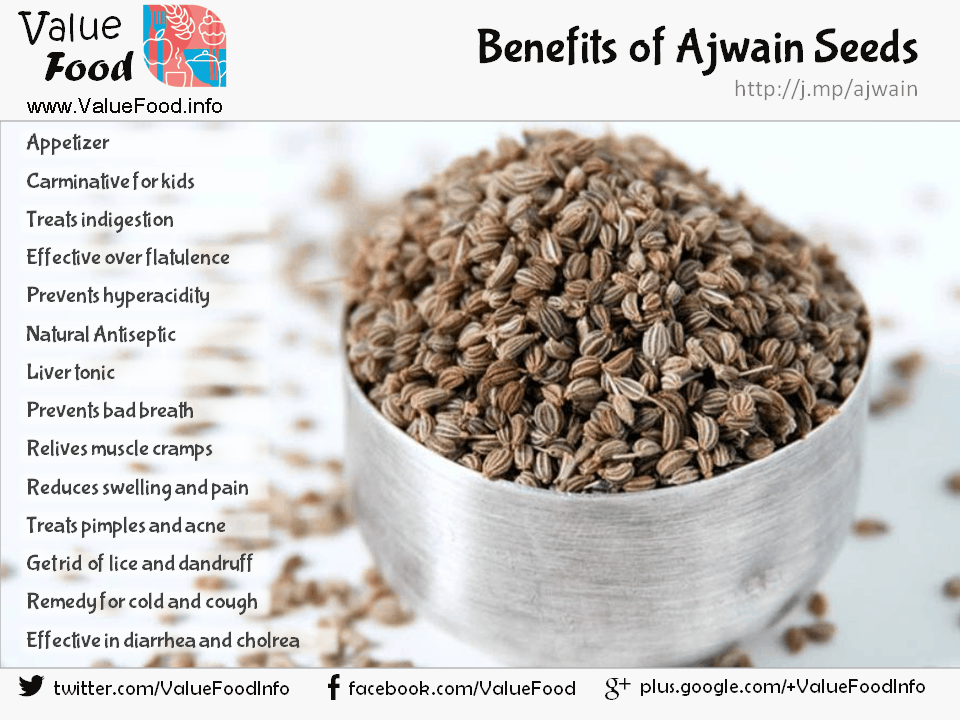
3. Apples
Apples are what most Moms opt for as the first fruit to feed their babies. They’re naturally sweet, easy to digest and have 3.6 grams of fiber in a small apple. With loads of benefits, apples are an excellent choice, especially when fed with the peel on for older kids. For babies, you can try these recipes:
- Apple and Cottage Cheese Puree
- Broken Wheat Apple Halwa
- Apple Ragi Porridge
Older kids will enjoy these:
- Quinoa Apple Porridge
- Apple Protein Milkshake
- Apple Whole Wheat Pancakes
You can also check out our list of healthy apple recipes for babies under one.
4.
PearsJust like apples, pears are sweet juicy and rich in fiber. A medium pair provides 5.5 grams of fiber, provided it has its skin on. Pears are also easy to feed babies and are easy to digest. You can try these pear recipes for your baby:
- Pear Puree
- Apple Pear Cinnamon Puree
5.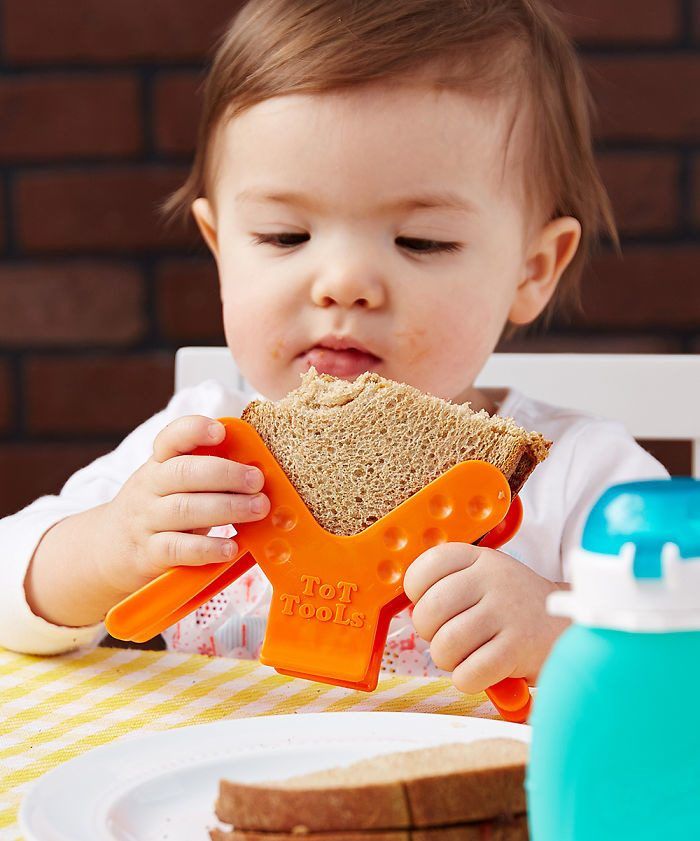 Bananas
Bananas
Bananas – the most preferred way of sweetening baby food without sugar! A medium banana packs 3.1 grams of fiber, making it one of the easiest ways of increasing your child’s fiber intake. From babies to teens, a banana is the ideal travel snack too. Try out these banana recipes for your baby:
- Banana Ghee Fry
- Strawberry Banana Puree
- Kiwi Banana Puree
- Ragi Banana Halwa
For older kids, you can try these:
- Banana Oats Pancakes
- Banana Omelette Recipe
- Barnyard Millet Banana Bread
All bananas have fiber, and raw Kerala bananas help babies gain weight too. Check out our list of healthy Kerala banana recipes.
6. Avocado
This creamy delicious fruit finds place in many recipes ranging from sweet to savory. It’s touted as a health food the world over and with good reason – half a cup of avocado has 5 full grams of fiber. Besides, they’re also rich in heart healthy fats.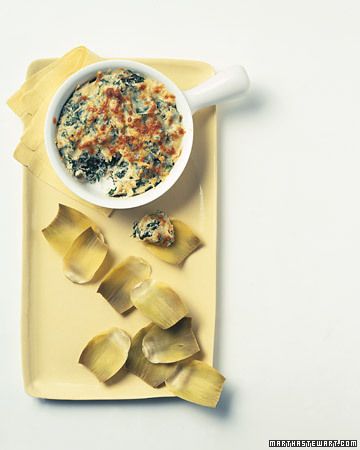 The creaminess of the fruit makes avocado ideal for babies, especially in recipes like avocado puree.
The creaminess of the fruit makes avocado ideal for babies, especially in recipes like avocado puree.
7. Mango
Mango, the king of fruits, is one of those things that kids readily eat, thanks to its juiciness and sweetness. But mango isn’t all about the taste, it’s got loads of fiber too, at nearly 3 grams a cup. While babies can munch on mango slices as finger food, you can also try these recipes:
- Easy Mango Yogurt
- Mango Puree
- Mango Cucumber Soup
Old kids will enjoy mango in these recipes:
- Mango Dates Smoothie
- Homemade Mango Kulfi
- Mango Frooti Concentrate
For more recipe ideas, check out our list of healthy mango recipes for babies and kids.
8. Pineapple
The spiky tropical fruit can be fed to babies too! On their own pineapple slices make great teething rings, especially when they’re frozen. What’s more, a cup of pineapple chunks have 2.3 grams of fiber. Besides raw pineapple, you can also try these for your baby:
- Pineapple Carrot Puree
- Pineapple Kesari
Older kids will enjoy an upside down pineapple cake as a healthy afternoon snack!
9.
 Prunes
PrunesPrunes are the number one natural remedy for constipation, and it’s understandable – with 3 grams of fiber in just quarter of a cup, this is a fiber super food! Even little babies can have prunes, both as prevention and treatment for constipation.
10. Nuts Powder
All kinds of nuts are rich sources of fiber and loads of other nutrients including healthy fats. However, nuts can prove to be a choking hazard for babies and young kids, so nuts powder is the best option. You can try either of these:
- Dry Fruits Powder
- Mixed Nuts Powder
This powder can be mixed into any recipe – it’ll only taste more delicious!
11.
CarrotsCarrots are the apples of vegetables; they’re most babies’ first veggie! Not surprising, since carrots are rich in Vitamins A and C, and also have 2.9 grams of fiber in every half cup. Carrot sticks can also be steamed and offered as finger foods. Babies will love these carrot recipes:
- Carrot Puree
- Carrot Oats Porridge
- Carrot Poha Kheer
Older children will enjoy these carrot recipes:
- Egg Carrot Chapathi Roll
- Spiced Carrot Walnut Muffins
- Carrot Cheese Paratha
12.
 Beetroot
BeetrootBeetroots are something many children will eat if presented well, since the color itself is so attractive. Not only that, beets are packed with iron, potassium and manganese, as well as a royal 3.8 g in a cup. Try out these beetroot recipes for babies:
- Carrot Beetroot Soup
- Beetroot Chickpea Puree
- Beetroot Pearl Millet Porridge
- Beetroot Potato Pure
- Beetroot Halwa
For older kids, you can try these beetroot recipes:
- Beetroot Burger
- Beetroot Paratha
- Beetroot Rolls
- Beet Applesauce Dip
13.
Sweet potatoesPotatoes may be popular, but many of us don’t realize that sweet potatoes are just as good, maybe even better! Along with Vitamins A and C, sweet potatoes provide us with 3.8 grams of fiber per medium sweet potato. The simplest way to feed this to babies is with a sweet potato puree. Older kids will enjoy these recipes:
- Sweet Potato Dosa
- Sweet Potato Fries
- Sweet Potato Bruschetta
 Green Peas
Green PeasGreen peas are one of the most versatile vegetables available – you can easily add them to stews, soups, purees and much more! Green peas are a great source of protein, and half a cup of cooked green peas provides 4.4 grams of fiber. Babies can have peas in these recipes:
- Green Peas and Potato Puree
- Buttered Green Pea Mash
Older kids can enjoy green peas as part of these recipes:
- Quinoa Vegetable Upma
- Tofu Bhurji
Green beans are easily available, packed with nutrients and also a huge amount of fiber. Half a cup of beans contains a whopping 6-9 grams of fiber, making this a must have in your child’s diet. Babies will enjoy green beans in these recipes:
- Green Beans Puree
- Green Beans as Finger Food
16. Leafy Greens
Leafy greens are always included as part of a healthy diet, and we know that they contain loads of vitamins and iron. But did you know that greens like spinach and turnip greens also contain lots of fiber? One cup of cooked spinach contains 4.3 grams of fiber, while a cup of cooked turnip greens contains a good 5 grams! You can give your baby spinach with these recipes:
But did you know that greens like spinach and turnip greens also contain lots of fiber? One cup of cooked spinach contains 4.3 grams of fiber, while a cup of cooked turnip greens contains a good 5 grams! You can give your baby spinach with these recipes:
- Carrot Palak Puree
- Spinach Oat Pancakes
Older kids will love seeing the beautiful green color in these recipes:
- Creamy Spinach Soup
- Spinach Phulka
- Spinach Fritters
- Palak Poha Pakoda
Don’t forget to check out our list of healthy spinach recipes for babies and kids.
17. Broccoli
Broccoli isn’t something most kids eat readily, but there are ways to get kids to like broccoli. And it’s worth the effort too, considering one cup of cooked broccoli contains 5.1 grams of fiber. Broccoli can be given to babies but may cause excess gas, so introduce slowly and in small quantities, with these recipes:
- Broccoli Spinach Puree
- Broccoli Butter Puree
Older kids can try a broccoli mushroom soup. You can also check out our list on healthy broccoli recipes for babies and kids.
You can also check out our list on healthy broccoli recipes for babies and kids.
18. Yogurt
Yogurt isn’t exactly a high fiber food, but it deserves a place in this list because it contains probiotics and is crucial for a healthy gut and healthy digestion overall. Try these yogurt recipes for babies:
- Homemade Curd
- Homemade Strawberry Yogurt
- Homemade Mango Yogurt
- Coriander Curd Khichdi
- Turmeric Buttermilk
There are many ways to include yogurt in older kids’ food, like these recipes:
- Gopalkala
- Chocolate Yogurt Parfait
- Frozen Yogurt Bark
- Yogurt Fruit Parfait
- Curd Fritters
- Tricolor Fruit Parfait
- Flaxseed
Flax seeds are available in most supermarkets these days and are incredibly versatile since they can be added to anything. What’s more, a tablespoon of flax seeds contains 3 grams of fiber. For little ones, you can grind flax seed at home and sprinkle over their cooked food or into batter or dough before cooking. You can also add it to smoothies and soups.
For little ones, you can grind flax seed at home and sprinkle over their cooked food or into batter or dough before cooking. You can also add it to smoothies and soups.
20. Millet
Our grandmothers probably knew a thing or two about fiber, which is probably why millet featured so much among our traditional dishes! A 100 gram serving of millet contains a big 9 grams of fiber! And since millet can be given to babies, there are many recipes you can try:
- Multi Millet Porridge
- Beetroot Pearl Millet Porridge
- Little Millet Porridge
Older kids will love these recipes made with millet:
- Millet Kheer
- Multi Millet Paneer Paratha
- Barnyard Millet Vegetable Salad
- Millet Sathumaavu Laddu
- Pearl Millet and Green Gram Pesarattu
- Whole Grain Multi Millet Pancakes
You can get 100% natural millet preparations like Sprouted Finger Millet Flour, Millet Sathumaavu Health Mix, Organic Millet Dosa Mix, Foxtail Millet Noodles and Barnyard Millet Noodles.
21. Berries
Berries are pretty, and that may be one reason kids love them! But berries are also high in fiber, with raspberries topping the list at 4 grams in every half cup. Blueberries have 1.8 grams per half cup and strawberries have 1.5 grams fiber for half a cup. Babies will love a strawberry banana puree, while kids will love these recipes:
- Strawberry Cookies
- Strawberry Lassi
- Strawberry Banana Pancakes
- Strawberry Yogurt Muffins
You can also check out our list of healthy strawberry recipes for babies and kids.
(The foods in the list below are suitable for Children over One Year)
22. Whole-grain BreadWhite bread is made with grain that has the bran removed, which means no fiber. However, whole grain bread includes the bran and has about 2 grams of fiber a slice. So a sandwich with two slices gives you 4 grams! Here are a few recipes to try with whole grain bread:
- Homemade Whole Wheat Bread
- Hung Curd Sandwich
- Tricolor Sandwich
- Crispy Coconut Chutney Sandwich
- Paneer Sandwich
- Tricolor Bread Sushi Rolls
- Easy Bread Rolls
- Banana Coconut French Toast
23.
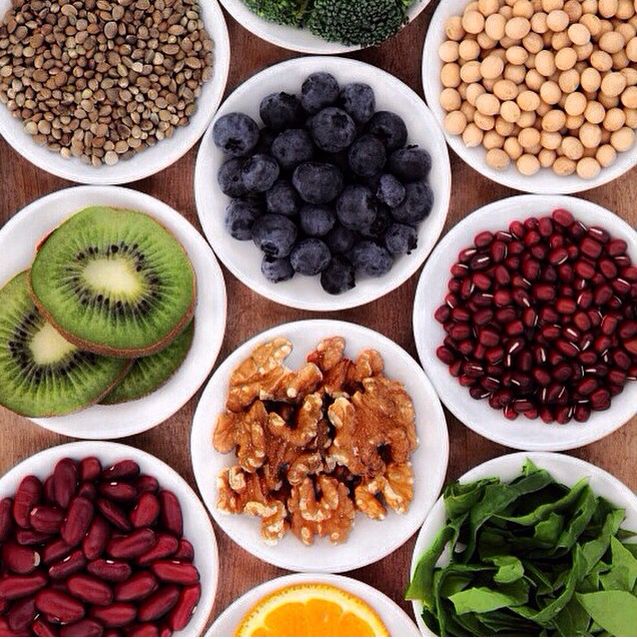 Whole-grain Pasta
Whole-grain PastaJust like whole grain bread, now whole wheat pasta is also becoming increasingly available. Half a cup of cooked whole wheat pasta has 2 grams of fiber and what’s more, it is more filling than regular pasta. Combine with other high fiber veggies and you have a meal! Check out these pasta recipes for kids:
- Minestrone Soup with Pasta
- Creamy Vegetable Pasta
- Vegetable Pasta Recipe
- Indian Style Macaroni
Besides pasta, you can also check out our range of 100% natural noodles made of whole grains and millet.
24. Brown Rice
White rice has the outer covering removed, which is why it is not as filling as brown rice. A cup of brown rice has a decent 3.5 grams of fiber, and goes great with all other ingredients from vegetables to chicken! Check out these brown rice recipes for kids:
- Okra Rice
- Paneer Vegetable Fried Rice
- Coriander Vegetable Rice
- Bell Pepper Fried Rice
- Vegetable and Soya Chunks Rice
- Brown Rice Flakes Kheer
- Brown Rice Poha
- Brown Rice Cutlets
- Coconut Rice
25.
 Barley
BarleyBarley has got to be the Superman of high fiber foods. With an incredible 32 grams of fiber in a cup of hulled barley, it’ll easily help taking care of your fiber needs for the day! Barley can be used in many ways, as you’ll find in our list of barley recipes for babies and kids.
26. Whole Grain Cereal
Cereal is one of the easiest things to feed kids for breakfast. After all, the only thing you need to do is serve with some milk! However, store bought cereals are notorious for being high in sugar and low on fiber. You can easily fix this with homemade cereal, which has about 9 grams of fiber in a ½ cup serving. Here are some options to try:
- Chocolate Muesli
- Fruit and Nut Granola
- Maize Flakes with Milk and Honey
27. Dried Beans
Dried beans tackle two common nutritional deficiencies in Indian kids – protein and fiber. Legumes like rajma and chana have 12-16 grams of fiber per serving, and they’re incredibly filling too! Here are some recipes you can try out with dried beans:
- Rajma Dosa
- Sprouted Moth Beans Frankie
- Rajma Veggie Quesadillas
- Rajma Sandwich
- Healthy Kidney Bean Soup
- Kid-friendly Chicken Chilli
- Chickpea Veggie Pancakes
- Roasted Chickpeas
Remember, sprouting dried beans multiplies their benefits manifold, by making their nutrients more bio-available.
Pomegranate seeds look like little jewels, and they certainly are, in terms of nutrition! These little red seeds have 3 grams of fiber in just half a cup and kids love them because of that burst of sweetness they have. Babies can try a pomegranate juice, while kids can enjoy these recipes:
- Eggless Apple Cake with Pomegranate
- Sugar Free Fruit Custard
- Sathumaavu Dahi Papdi Chaat
- Maize Flakes with Milk and Honey
- Homemade Constipation Juice
29. Corn
Corn is a popular dish with kids, probably because it is often associated with vacations and trips outside. It is one of those indulgences that are actually healthy! Half a cup of cooked corn has 1.8 grams of fiber. Here are some simple recipes to try with corn:
- Sweet Corn Fritters
- Baby Corn Fritters
- Sweet Corn Vegetable Soup
- Sweet Corn Fried Rice
- Sweet Corn Salad
- Cheese Corn Balls
30.
 Nuts and Seeds
Nuts and SeedsAlmost all nuts and seeds are packed with fiber, and that’s great because you can switch things up with a different variety. Almonds have the most fiber, with over 3 grams in a single serving while peanuts have over 2 grams. If your child has nut allergies, you can try pumpkin seeds or sunflower seeds instead. Check out these recipes with nuts you can try:
- Dates and Nuts Cooker Cake
- Homemade Peanut Butter
- Mixed Nuts and Poha Laddu
- Pistachio and Raisin Coconut Cookies
- Homemade Almond Milk
- Almond Shortbread Cookies
- Dates Almond Milkshake
- No Bake Brownies with Dry Fruit
- No Cook Dry Fruit Modak
- Dry Fruit Jaggery Energy Bars
- Dry Fruit Balls
Here are some recipes with seeds:
- Baked Ragi Crackers with Sesame Seeds
- Dates Chia Seeds and Apricot Laddu
- Dates Sesame Seeds Laddu
Tips for feeding Kids High Fiber Foods:
- Switch your regular grain with whole grain, like replacing maida with atta, or white rice with brown rice
- Make sure there is a fruit and vegetable at every meal
- Opt for whole fruits instead of fruit juice
- Add dry fruits powder or nuts powder to cooked dishes or into batter, dough or smoothies
- Add fruit, nuts and seeds to yogurt, cereal or oatmeal
- Add vegetables like lettuce to sandwiches
- Ensure kids drink enough water along with high fiber foods
Add these high fiber foods for babies and toddlers to the child’s diet gradually, increasing the quantity slowly.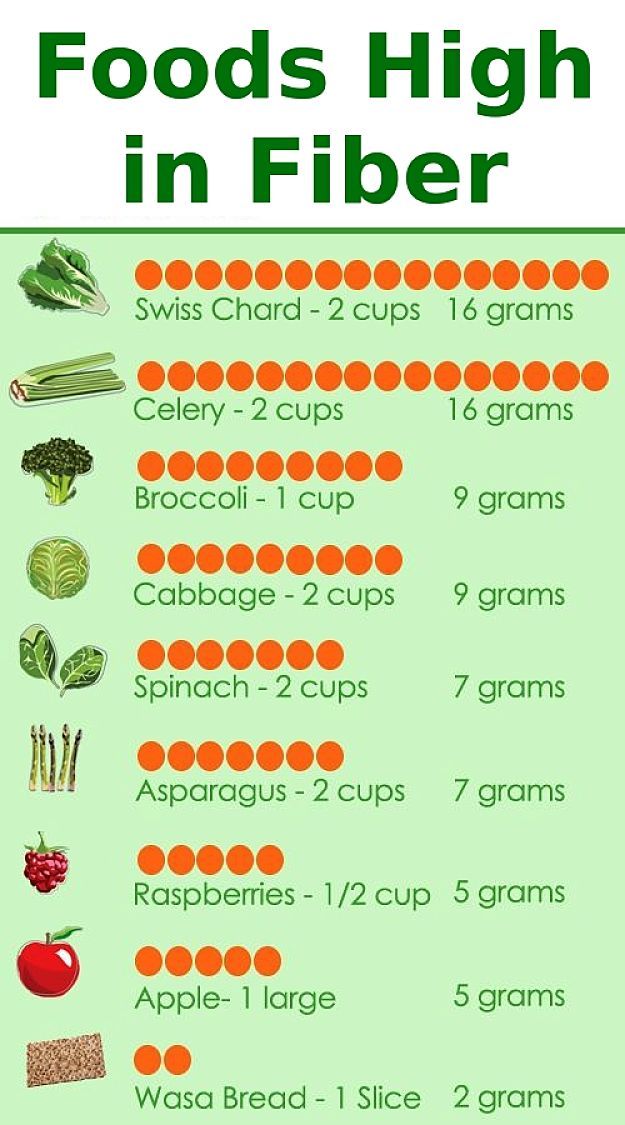 When introducing a new food for babies, always follow the 3-day rule. Too much fiber can cause bloating or gas as well as abdominal pain. When buying a food that claims to be high fiber, read the label carefully. Fiber is listed under ‘Total Carbohydrates’ as ‘Dietary Fiber’. A truly high fiber food should have at least 3 grams fiber per serving.
When introducing a new food for babies, always follow the 3-day rule. Too much fiber can cause bloating or gas as well as abdominal pain. When buying a food that claims to be high fiber, read the label carefully. Fiber is listed under ‘Total Carbohydrates’ as ‘Dietary Fiber’. A truly high fiber food should have at least 3 grams fiber per serving.
Please remember that the WHO recommends exclusive breastfeeding for the first six months, and there is no need of added fiber before that. If baby seems constipated during this time, it may help for the mother to eat some high fiber foods like prunes.
Frequently Asked Questions
What baby foods have the most fiber?
Oats, all fruits and vegetables have the most fiber in them.This article lists about 30 high fiber foods for babies.
How can I add more fiber to my baby’s diet?
Babies need about 55 to 110 grams of soft cooked high fiber vegetables a day. This article lists about 30 high fiber foods for babies.
Buy Healthy Nutritious Baby, Toddler food made by our own Doctor Mom !
Shop now!5 High Fiber Rich Foods For Babies
Fiber-rich foods and recipes for prevention and treatment of constipation.
Research-backed
MomJunction believes in providing reliable, research-backed information to you. As per our strong editorial policy requirements, we base our health articles on references (citations) taken from authority sites, international journals, and research studies. However, if you find any incongruencies, feel free to write to us.
Image: Shutterstock
Fiber is an essential nutrient that adds bulk to the stools and facilitates their smooth passage. Besides, it acts as a natural prebiotic that promotes good bacteria (probiotics) growth and supports gut health. Therefore, selecting age-appropriate high-fiber foods for babies is essential. Perhaps it is the reason that the American Dietetic Association (ADA) recommends people across age groups consume sufficient amounts of dietary fiber from various plant foods (1) (2).
Scroll down to read more about dietary fiber and its possible benefits for babies, its side effects, and some high-fiber recipes you can feed to your baby. But before we dwell on details, let’s first understand the basics and learn some basic facts about fiber and its types.
Is Fiber Good For Babies?
Fiber is good for babies. The inclusion of dietary fiber in a baby’s diet can help enhance gut microflora and keep the digestive system healthy. Research suggests that the first years of life are crucial for establishing a healthy colonic microflora, as well as good eating habits (3). Thus, the intake of dietary fiber for babies is beneficial.
Dietary Fiber And Its Types
Dietary fiber or fiber is a type of complex carbohydrate found in plant foods (4). It cannot be easily digested in the small intestine, and this brings in the health benefits associated with it.
There are two forms of dietary fiber, soluble and insoluble. Most plant foods contain some amount of each type, which can provide specific health benefits.
Most plant foods contain some amount of each type, which can provide specific health benefits.
How Much Fiber Do Babies Need?
There are no clear guidelines on the recommended amount of dietary fiber for babies younger than one year (5) (6). Nutrition experts recommend five grams of fiber a day for children below the age of two years (7). It is best to consult a pediatric nutritionist to know about the ideal limit for your baby.
Uses Of Fiber For Babies
Fiber is an important part of an individual’s diet. It is helpful in the following ways for the baby:.
- Supports digestive health: Insoluble fiber, a type of dietary fiber present is whole grains, whole pulses, raw fruits, and vegetables is vital for maintaining digestive health. Upon ingestion, it swells up in the intestine by trapping water and adds bulk in the diet leading to smooth passage of stool. It helps prevent constipation, and supports the pH of the intestine, and prevents colonization of harmful microbes (8) (9).
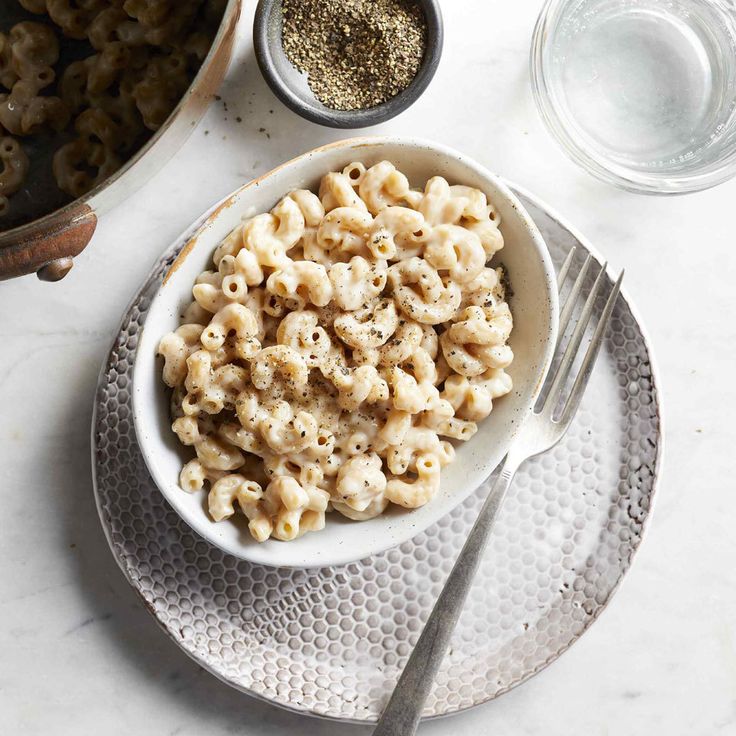
- Good for gut microflora: The total dietary fiber, i.e., soluble and insoluble fiber, works as prebiotics or food for millions of probiotic bacteria living in the human gut. According to a research study published in the Journal of Cell Host and Microbe, the type, quality, and origin of food impacts the gut microbes (10).
- Strengthen immunity: Dietary fiber works as prebiotics and helps enhance immunity by increasing the population of beneficial microbes, such as lactic acid bacteria and bifidobacteria (11) (12). These bacteria could help fight harmful pathogens, and thus boost immunity.
- Supports absorption: A healthy gut harbors healthy microbiomes that assist in the proper digestion of food and absorption of nutrients (13) (14). Both these processes are vital for maintaining overall health and well-being.
- Improves appetite: Soluble fiber helps keep the tummy full.
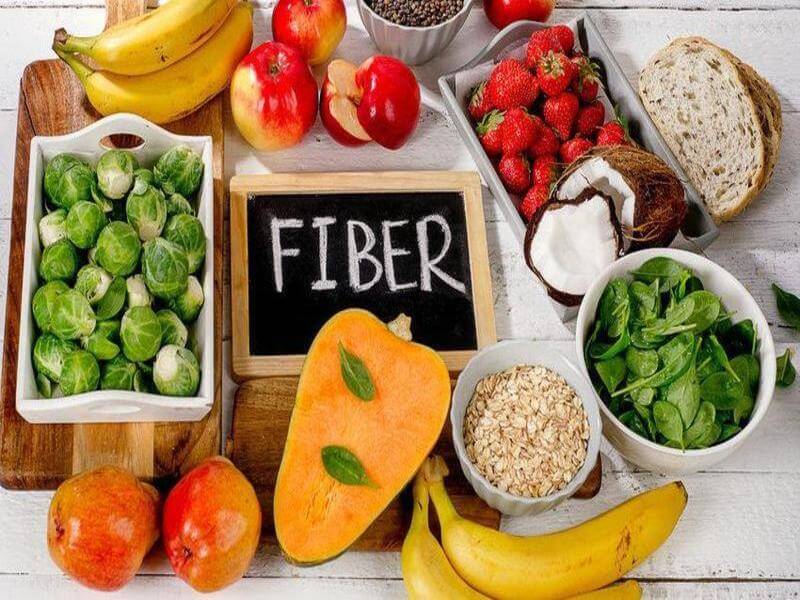 On consumption, it combines with water and forms a gel-like structure that delays gastric emptying. This mechanism increases the total amount of time the food stays in the gut and thus facilitates the sensation of satiety. It also helps in the secretion of appetite-regulating hormones within the gastrointestinal tract (15).
On consumption, it combines with water and forms a gel-like structure that delays gastric emptying. This mechanism increases the total amount of time the food stays in the gut and thus facilitates the sensation of satiety. It also helps in the secretion of appetite-regulating hormones within the gastrointestinal tract (15).
There are several sources of dietary fiber for babies. In the next section, we tell you about the fiber-rich foods you can feed your baby.
High Fiber Foods For Babies
A well-balanced, fiber-rich diet for a baby includes foods from the following food groups.
1. Grains (and cereals)
You can include cereals and grains in a baby’s diet as they begin eating solids. It will add variety in the meals and ensure the intake of fiber along with other vital nutrients. A few options that you can try are oatmeal, brown rice, barley, whole wheat, and maize. Besides, you can also try adding some pseudocereals such as quinoa, buckwheat, and amaranth (16).
2. Vegetables
Babies can consume all vegetables pretty much at the onset of starting solids. Vegetables are a good source of micronutrients and dietary fiber. Besides, they are not high in simple carbohydrates. A few high-fiber vegetables that you could try for your baby are spinach, broccoli, beans, edamame, sweet potato, corn, and carrots. Give these vegetables in cooked and pureed form since babies might find it difficult to digest raw vegetables. Or if using the baby-led weaning approach to feeding, give the vegetables cooked until soft and cut into wedge-sized pieces for younger babies, or bite-sized pieces for older babies.
3. Fruits
Fruits contain dietary fiber and also several micronutrients. It is good to include at least one fruit a day in your baby’s diet. Some high-fiber fruits that you can consider are watermelon, muskmelon, apple, banana, strawberries, and blackberries.
4. Dried fruits
Dried fruits are potential choking hazards for babies around 6-12 months of age (17). But you can serve them in cooked and pureed form. Once your baby has started finger foods, you can cook dried fruits or chop them into small pieces to feed the baby. Some of the high-fiber options are prunes, apricots, dates, and figs.
5. Pulses and legumes
Pulses and legumes are considered a good source of protein and micronutrients like iron, potassium, and folate. However, they are also good sources of dietary fiber. Some options from this food group that you could include in your baby’s diet are horse gram, Bengal gram (whole), kidney beans, split peas, lentils, and chickpeas.
Possible Side-Effects Of Excessive Fiber Intake
People who consume fiber are less susceptible to chronic diseases (1). But you shouldn’t go overboard because it could have some adverse outcomes (18).
- High fiber and low water intake may lead to constipation or diarrhea.
- It might lead to a decrease in mineral absorption, which could be detrimental to the baby’s health.
- Consuming excessive fiber may cause flatulence, bloating, abdominal cramps, and nausea.
- It may cause a decrease in appetite in some cases and might lead to growth failure.
Precautions To Take While Introducing Fiber Foods To Babies
- Observe variety and moderation in the foods you give your baby.
- Start with a single grain (or cereal) for young babies. As the baby grows older, you can start multigrain meals.
- Minimize fiber loss by not peeling fruits and vegetables. Scrape them instead.
- Consult a pediatrician before starting a new fiber food for your baby.
- Water intake, along with fiber intake, is important. Fiber needs water to function (19). Offer small amounts of water (1-2oz) in an open cup with meals. Breast milk or formula are still the primary sources of nutrition for the entire first year, so make sure to give a milk feed an hour or so before offering solids to maintain hydration levels.
- Babies must have fiber from natural foods only. Avoid using isolated or commercial fiber.
Ways To Include High Fiber Foods In Baby’s Diet
The following are a few interesting recipes to include fiber in your baby’s diet.
For babies five to six months old
Babies at this age do not develop eating skills and digestive systems. So, the best way to introduce food to them is in the puree or mashed form. It ensures easy swallowing and digestibility.
For optimum fiber intake, vegetables like sweet potato, carrot, and green peas can be included in the diet. You can also include fruits like apple, banana, and raspberries.
1. Sweet Potato Puree
Image: Shutterstock
You will need:
- 1 sweet potato
- 1tsp extra virgin olive oil
- ¼tsp cumin (optional)
How to:
- Wash sweet potato in cold water and with a thin, bristled brush scrape its skin to remove dust and dirt from the surface.
- Once it is clean, dice the sweet potato into pieces of approximately two inches in size.
- Put these pieces into a pan and place the pan on a medium flame. Add enough water to cover the pieces and cover the lid of the pan.
- Let the pieces cook for 15-20 minutes. Check with a fork if the pieces are soft.
- Once done, put the pieces with water in a blender and blend until you get a smooth paste.
- Take another pan, pour oil in it, and place the pan on low flame.
- As the oil gets heated, add cumin. Once cumin starts to flutter, add the puree in the pan.
- Keep stirring the puree and cook for three to four minutes, and then your puree is ready to serve.
2. Banana Puree
Image: Shutterstock
You will need:
- 1 ripe banana
- 2-4tbsp water
How to:
1. Peel the banana and cut it into small pieces. Put these pieces into a blender to ensure no lumps are there.
2. Add water in the blender as per requirement and blend until you get a smooth puree.
3. Pour the puree in a cup, and it is ready to serve.
Note: You can add breast milk or formula milk instead of water to make these purees smoother.
For babies 6-12 months old
Babies in this age bracket usually progress from purees to finger foods. Since the baby’s digestive system is more mature now, you can include foods from different food groups.
3. Veggie Lentil Soup
Image: Shutterstock
You will need:
- 1 cup mixed lentils
- 1 cup diced vegetables (carrots, peas, corn, broccoli, onions, tomatoes, and zucchini)
- Parsley (chopped) – for garnishing
- Lemon juice (optional)
- 2tsp virgin olive oil
- ¼tsp black pepper powder
- Salt to taste
How to:
- Take a bowl, put lentils in it, and wash thoroughly for at least two to three times and keep it aside.
- Wash all the vegetables thoroughly in cold water. Clean them with a thin bristled brush to remove all the dust and dirt.
- Take another bowl, cut all the vegetables, and keep the bowl aside.
- Now, take an iron pot, and place it on medium flame. Pour oil in it, and as the oil gets hot, put onions in it.
- Fry the onions till golden brown, add all the vegetables in the pot, and then cook for five minutes.
- Add lentil mix in the pot and mix everything well.
- Pour water into the pot until the veggie and lentil mix gets covered. Place a lid and cover the pot
- Keep the pot on simmer and let the mix cook for 15 minutes. Check with a fork in between. If vegetables and lentils are soft, then switch off the flame.
- Once the mixture is cooked, you can transfer it into a bowl and mash it. If you want a thinner consistency, then you can also blend it.
- Add pepper powder, and lemon juice to taste and garnish with parsley. Your soup is ready to serve.
4. Yummy Roasted Vegetables
Image: iStock
You will need:
- 1 bowl of vegetable pieces (carrots, capsicum, corn, broccoli, onions, tomatoes, and zucchini)
- Lemon juice (optional)
- 2tsp virgin olive oil
- ¼tsp black pepper powder
How to:
- Wash all the vegetables thoroughly. Clean their skin with a thin, bristled brush to remove dust and dirt from the surface.
- Cut the vegetables into thin slices and place them on a roasting plate lined with baking sheet. Place the vegetables with gaps, avoid overlapping so that vegetables can get cooked evenly.
- Drizzle olive oil and sprinkle pepper.
- Preheat oven to 400°F (205°C). Place the vegetables in the oven and set the timer to 15 minutes.
- After 15 minutes, toss the vegetables and again set the oven for another ten minutes.
- Once done, place the vegetables on a serving plate and sprinkle lemon juice.
Your yummy roasted vegetables are ready.
1. Can babies have fiber supplements?
Babies should not have fiber supplements unless recommended by a pediatrician. Natural fiber from food is preferred to isolated or commercial fiber supplements, especially for babies. The natural sources of fiber, such as fruits, vegetables, and grains, contain several other vital nutrients that are not likely to be there in fiber supplements.
2. Is oatmeal for babies high in fiber?
Oatmeal is a rich source of fiber. It is made by processing oats grain, which is particularly rich in soluble fiber called beta-glucan. Beta-glucan has some potential health benefits for babies as well as adults. In terms of nutritional value, 100g of cooked oatmeal (cooked without fat) contains approximately 2.2g fiber.
Including fiber foods for babies could benefit them in many ways. Fiber is vital for promoting gut health, immunity, and the smooth elimination of stools. Moreover, several foods are rich in fiber and easy to incorporate into a baby’s meal. Cereals, fruits, and vegetables, including apple, banana, spinach, broccoli, and carrot, are some foods that may help meet your baby’s daily dietary fiber requirements when included in a properly cooked, age-appropriate manner. However, make sure you include fiber in your baby’s diet in moderation and through various foods.
References:
MomJunction's articles are written after analyzing the research works of expert authors and institutions. Our references consist of resources established by authorities in their respective fields. You can learn more about the authenticity of the information we present in our editorial policy.
1. Position of the American Dietetic Association: Health Implications of Dietary Fiber; Science Direct
2. Devinder Dhingra et al.; Dietary fibre in foods: a review; National Center For Biotechnology Information
3. Edwards CA and Parrett AM; Dietary fiber in infancy and childhood; National Centre for Biotechnology Information (2003)
4. Types of Carbohydrates; Lane Community College
5. Eating, Diet, & Nutrition for Constipation in Children; Constipation in Children; National Institute of Diabetes and Digestive and Kidney Diseases; National Institute of Health
6. Dietary Reference Intakes: Macronutrients; National Academics
7. Alexandra Barrera; Baby Your Baby – Preventing Pediatric Constipation; Intermountain Moms; Intermountain Healthcare (2013)
8. Soluble vs. insoluble fiber; Medical Encyclopedia; Medline Plus (2018)
9. Dietary Fiber; Colorado State University (2018)
10. Makki K et al.; The Impact of Dietary Fiber on Gut Microbiota in Host Health and Disease; National Centre for Biotechnology Information (2003)
11. Schley PD and Field CJ; The immune-enhancing effects of dietary fibers and prebiotics.; National Centre for Biotechnology Information (2002)
12. Shokryazdan P et al. ; Effects of prebiotics on the immune system and cytokine expression.; National Centre for Biotechnology Information (2017)
13. Quigley EMM; Prebiotics and Probiotics in Digestive Health.; National Centre for Biotechnology Information (2019)
14. Paul O Sheridan et al.; Can prebiotics and probiotics improve therapeutic outcomes for undernourished individuals?; National Centre for Biotechnology Information (2014)
15. Candida J. Rebello et al.; Dietary fiber and satiety: the effects of oats on satiety; National Centre for Biotechnology Information (2016)
16. Choking Hazards; Centers For Disease Control And Prevention
17. Treatment for Constipation in Children; Constipation in Children; National Institute of Diabetes and Digestive and Kidney Diseases; National Institute of Health (2018)
18. How to Increase Volume in Your Meals; Post-Core: More Volume, Fewer Calories; Centre For Diseases Control and Prevention
19. Fiber How Much Is Too Much; Student Affairs; Duke Student Health Nutrition Services
The following two tabs change content below.
- Reviewer
- Author
Swati Patwal is a clinical nutritionist, a Certified Diabetes Educator (CDE) and a toddler mom with over eight years of experience in diverse fields of nutrition. She started her career as a CSR project coordinator for a healthy eating and active lifestyle project catering to school children. Then she worked as a nutrition faculty and clinical nutrition coach in different... more
Natasha Uspensky is a certified holistic nutrition counselor, Ayurvedic practitioner, wellness blogger, and founder of NU Health & Wellness and The Organic Beauty. She practices a holistic approach to wellness, believing that health and happiness come from achieving a sense of balance in all areas of life — from food, movement, and environment, to relationships, community, and career. She specializes... more
Is It Safe To Eat Lotus Seeds (Makhana)..
Is It Safe To Eat Lotus Seeds (Makhana)..
Dry Fruits During Pregnancy: Benefits,..
Dry Fruits During Pregnancy: Benefits,..
Spinach For Babies: Right Age, Benefits..
Spinach For Babies: Right Age, Benefits..
Cinnamon For Babies: Safety, Benefits..
Cinnamon For Babies: Safety, Benefits..
Is It Safe To Consume Cinnamon During..
Is It Safe To Consume Cinnamon During..
Top 10 Food Ideas For Your 16 Months..
Top 10 Food Ideas For Your 16 Months..
4 Possible Health Benefits Of..
4 Possible Health Benefits Of..
ORS for Babies: Dosage, Benefits And..
ORS for Babies: Dosage, Benefits And..
13 Excellent Benefits Of Avocados..
13 Excellent Benefits Of Avocados..
What you need to eat to saturate the body with coarse fiber?
17 December 2019
1 February 2021
4 minutes
139318
ProWellness
Contents
- Benefits and harms for the body
- Foods rich in coarse fibers
- Bran - only good
- Recommended products
Disclaimer of liability
Please note that all information posted on the site Prowellness is provided for informational purposes only and is not a personal program, a direct recommendation for action, or medical advice. Do not use these materials for diagnosis, treatment, or any medical procedure. Consult your physician before using any technique or using any product. This site is not a specialized medical portal and does not replace the professional advice of a specialist. The Site Owner is not liable to any party who has suffered indirect or direct damage as a result of misuse of materials posted on this resource.
What should be eaten to saturate the body with coarse fiber?
Coarse fiber is the dietary fiber of cellulose. They are not absorbed and do not provide nutrients to the body. But at the same time, they are very important for the health and functioning of the intestines, cardiovascular and endocrine systems.
Benefits and harm to the body
Coarse fiber is the basis of a healthy full life. It performs a number of important functions for the body:
- helps to maintain normal weight and not gain extra pounds;
- optimizes bile secretion to avoid gallstones;
- reduces the number of harmful bacteria in the intestines;
- normalizes peristalsis, which contributes to a healthy stool;
- accelerates lipid synthesis;
- cleanses the body of toxins, poisons, salts and heavy metals.
A source of natural fiber for every day is a refreshing drink Weight Control Drink (apple-lemon) - Yoo Go with natural fruit juice. Contains citrus fiber, apple pectin, psyllium husks and guar gum. The drink helps to adjust the diet and control its calorie content.
Attention! With regular use of coarse fiber, the risk of getting oncology, diabetes, obesity, hemorrhoids, atherosclerosis, and cholelithiasis is significantly reduced.
But there are such food and contraindications. This is the presence of gastritis, duodenitis, stomach ulcers and colitis. With such pathologies, a special diet with a reduced amount of coarse dietary fiber is prescribed.
Foods rich in coarse fibers
To supply the body with coarse fiber, it is enough to use foods from the list:
- Fruits and berries. Most fruits and berries have dietary fiber needed by the intestines. One of their main sources is raspberries.
Just one cup has 2.5 grams of fiber. Peeled apples and strawberries are also suitable. You can make a fruit salad from all the ingredients and add sesame seeds there. This is the perfect combination for enrichment with plant fiber.
- Whole grains. Leaders in the content of coarse fiber. Simply add wheat bran to oatmeal or other cereals. This also includes germinated wheat grains. For lovers of overseas delicacies, popcorn is suitable. Whole grain bread is much healthier than plain white bread, and contains 4 times more fiber.
- Vegetables. Almost all vegetables contain essential fiber. Stewed turnips and plain green peas top the list. There are 3 grams of dietary fiber per half cup of these foods.
- Rice bran. A rare product in use, but surprisingly useful.
- Beans and legumes. In this group, the leader is beans. All legumes contain fiber, but beans definitely come first.
- Nuts and seeds. Useful substances in nuts are simply innumerable.
Foods such as almonds, pistachios, walnuts and flax seeds should be included in the daily diet of any person.
A list of fiber-rich foods would be incomplete without cereals: buckwheat, oatmeal, and brown rice. But in the first place in the ranking are various bran.
Bran - only good
Bran of oats, wheat, rye is an indispensable component of the most useful diets for weight loss. They help to lose weight, improve bowel function, remove toxins from the body.
Bioactive oat beta-glucans are part of the Pure Heart Drink with Strawberries from the YooGo line of operational nutrition. Being a source of fiber and dietary fiber, it improves the functioning of the digestive system and induces a feeling of satiety, which is important when losing weight. It also helps lower cholesterol and blood glucose levels.
Filled with dietary fiber and Blackberry Nutrient Shake from the YooGo online nutrition line, rich in vitamins, amino acids and healthy fats. The balanced composition of each serving provides the body with vital nutrients and helps to maintain a feeling of satiety for a long time.
Attention! When losing weight, it is enough to eat 2 tablespoons of bran half an hour before meals and drink them with water. The stomach will not allow you to eat too much, which will reduce the amount of fat and calories consumed.
To get enough coarse fiber for health, it is necessary to replace plain bread with bran bread in the daily diet. When using bran on the menu, it is important to remember that they can reduce the effect of drugs. Therefore, bran should be consumed half an hour after taking any drug.
Disclaimer
Please note that all information posted on the site Prowellness is provided for informational purposes only and is not a personal program, a direct recommendation for action, or medical advice. Do not use these materials for diagnosis, treatment, or any medical procedure. Consult your physician before using any technique or using any product. This site is not a specialized medical portal and does not replace the professional advice of a specialist. The Site Owner is not liable to any party who has suffered indirect or direct damage as a result of misuse of materials posted on this resource.
Expert: Ekaterina Vladimirova Expert in the field of maternity and child nutrition
Reviewer: Ekaterina Vorobieva Adept of a healthy and active lifestyle
Read other articles on similar topics
Evaluate coarse fiber
(44 votes, average 4)
Share article
List of foods rich in fiber. Foods rich in fiber
Dietary nutrition of a modern person cannot be imagined without dietary fiber, which back in the 70s of the last century was considered an absolutely useless substance for the body. Let's look at the portal "We lose weight without problems", is it really as useful as the advertising of some network companies screams about it. What foods are rich in fiber? And in what cases can coarse plant foods harm the body?
What is fiber?
Dietary fibers of plant origin are called fiber, which pass through the gastrointestinal tract practically unchanged, i.e. are not digested by the body and do not break down into its constituent parts. Different plants contain different amounts of dietary fiber, but their main concentration is the stems, seeds and peel.
Dietary fibers are divided into soluble and insoluble. The former are called pectins or alginates: they can be found in oat bran, some fruits and berries, and also in leafy ones.
Soluble fiber sources are soft and thin-skinned, so the body can break them down to a gel-like state to the best of its ability.
Coarse insoluble dietary fiber is not able to be processed by the gastrointestinal tract due to the lack of the necessary enzymes, so they leave the human body unchanged.
But they are able to absorb a huge amount of liquid in conjunction with slag and swell. Mushrooms, cereals, vegetables and seeds contain varieties of coarse fibers such as cellulose and lignin.
The most beneficial for the body is the symbiosis of pectins and coarse dietary fiber in a ratio of 3:1, so the diet should be as diverse as possible.
Benefits of fiber
- We have to make a lot of effort to chew coarse food. This process is accompanied by the release of a large volume of saliva, which has an antimicrobial effect, which positively affects the general condition of the oral cavity.
- , stimulate the digestive tract and relieve constipation.
- Vegetable fibers, getting into the intestines, cleanse the body of toxic compounds, toxins and allergens, and also prevent the formation of putrefactive masses.
- The body is cleansed of harmful cholesterol, blood sugar levels are reduced.
- Food with a lot of fiber, after which a person feels full for a long time, effectively helps the process of losing weight.
So, it is difficult to overestimate the benefits of fiber for the body, especially during weight loss. Therefore, dietary fiber is now also created under artificial conditions in the form of dietary supplements, but in terms of usefulness they are naturally inferior to analogues of natural origin.
An adult requires 25 to 35 grams to ensure normal bowel function. fiber per day. So that you can easily determine the amount you need for yourself, in this article, foods rich in fiber are combined into a list. With a diet that is poor in dietary fiber, nutritionists advise eating about 1 tbsp daily. l. .
What threatens the deficiency and excess of fiber in the diet?
For a long time, plant fibers were considered by scientists as useless ballast for the body and their role in maintaining human health was underestimated. But it turned out that their lack of food can threaten such serious health problems as:
- Pathology of the gastrointestinal tract, which may be accompanied by constipation, decreased peristalsis, dysbacteriosis.
- Hemorrhoids.
- Cardiovascular disease, risk of stroke and heart attack.
- Diabetes mellitus.
- Obesity.
- Cholelithiasis.
- Malignant tumors of the rectum.
It is not surprising that the majority of girls who want to quickly lose extra pounds quickly switch to foods rich in vegetable fiber. This approach is fundamentally wrong, because. its excess can cause such phenomena as:
- Constipation, diarrhoea, flatulence, abdominal pain.
- Nausea, vomiting.
- Dysbacteriosis, violation of intestinal motility.
Looking for high fiber foods
The list of such products is quite long, so do not rush to buy special dietary supplements at the pharmacy. With the right organization of the diet, even diet food can be varied and tasty, the main thing is to introduce such products in stages, determining the reaction of the body.
The undisputed leader among products in terms of dietary fiber content is bran. There are many of them in legumes, mushrooms, cereals, seed products, nuts, fruits, dried fruits, vegetables and berries. Below is a list showing the amount of fiber in 100 grams. product.
So, foods rich in fiber - table 1.
For your convenience, the fiber content in vegetables, fruits and berries is shown in table 2.
In flour products, animal fat, vegetable oil, fruit and vegetable There is practically no dietary fiber in juices, meat and fish. And this is not a reason to completely abandon their use in favor of coarse plant foods, but you can gradually replace wheat bread with whole grains, and instead of sweet juices, do with the addition of fruits and berries.
Fiber and protein - a direct path to a dream figure
Sometimes a rigid diet or the desire to become the owner of a sculpted body forces people to limit or completely eliminate carbohydrate intake by increasing the proportion of proteins. This can cause constipation, flatulence, and nutrient deficiencies in the body. To continue to lose weight and gain muscle on a high-protein diet and still feel good, you need to diversify your menu with foods high in dietary fiber.
Below is a list of foods that contain both protein and fiber. They have one clear advantage for weight loss: they slow down the process of converting carbohydrates into glucose. A person stays full longer, and glucose is not deposited on the sides in the form of fat deposits.
So, food rich in fiber and protein, food list:
- Legumes and cereals: beans, soybeans, brown rice, chickpeas.
- Pome products and nuts: pumpkin seeds, walnuts, almonds, hazelnuts, cashews.
- Vegetables and fruits: avocados, bananas, spinach.
The list can also be expanded with tofu, soy asparagus and whole grains.
Modernization of the protein diet by including foods with fiber in the diet not only accelerates weight loss, but also makes this process comfortable for the body. In addition, fiber is a great tool to cleanse the body of bad cholesterol and excess sugar.
/ 05/16/2018
Get rid of dangerous papillomas FOREVER
A simple and proven way to get rid of papillomas and warts without dangerous consequences. Find out how >>
Fiber is divided into two types: soluble (soft) and insoluble (coarse). The greatest benefit for our body is provided by coarse fibers, which are a glucose polymer. They are not broken down in the gastrointestinal tract, are excreted naturally, and are not a source of energy. Coarse fiber reduces the risk of cancer, helps to reduce weight, lowers cholesterol synthesis. Therefore, coarse fibers must be present in the diet of every person. Today we will tell you which foods contain coarse fiber.
Foods rich in coarse fiber are necessary for the human body to accelerate the synthesis of lipase in adipose tissue, regulate the amount of glucose in the blood, reduce plasma cholesterol, normalize the intestinal microflora, excrete bile acids, and also in order to avoid the formation of stones in gallbladder. In addition, fiber reduces the risk of constipation and hemorrhoids, and prevents the development of cancer.
Coarse fiber brings special benefits to women's health. If the representatives of the weaker sex regularly consume foods containing fiber and coarse fibers, then the risk of getting breast cancer or ovarian cancer is reduced.
Coarse vegetable fiber that enters the body from certain foods is not broken down in the stomach, it begins to absorb toxins and harmful substances. This happens due to silicon, which literally attracts heavy metals, radionuclides and viruses.
The benefits of coarse fibers for the body do not end there. If you want to maintain body weight, reduce weight, then foods containing coarse fiber should be the basis of your diet. It not only has a low calorie content, but also slows down the digestibility of carbohydrates, proteins and fats. In the stomach, it increases significantly in volume, stimulating the work of the intestines and bringing a feeling of satiety. Regular consumption of such food leads to suppression of appetite, excretion of water and sodium, creating a feeling of satiety.
Which foods contain coarse fiber: List
Foods rich in coarse fiber include bran, wholemeal foods, cereals and muesli made from hard cereals, as well as corn and brown rice. Add sprouted grains, bran, oatmeal to salads.
Vegetable products rich in coarse fiber also include vegetables and fruits: cauliflower, beans, broccoli, potatoes, pumpkin, cucumber, dill, sweet pepper. It is advisable to use them with the peel, since it is in it that the maximum amount of coarse fiber is present. Therefore, do not peel pears, apples, peaches and other fruits. Note that heat treatment does not affect the amount of fiber. But still it is desirable to use them raw.
Coarse fiber intake
We have provided you with a complete list of coarse fiber foods. Now it is important to talk about the rules and norms for the consumption of foods containing coarse vegetable fiber.
25-40 grams of coarse fibers are sufficient per day for an adult. The exact daily requirement depends on physical activity, weight, health status. To get such an amount of coarse fiber, it is enough to eat 1.5 kg of fresh fruits and vegetables per day. Please note that this substance should be introduced into the body gradually.
Foods rich in fiber have a beneficial effect on the health of the whole organism, since the intestinal microflora depends on them. Fiber, the so-called dietary fiber, is a complex carbohydrate composed of non-starch polysaccharides, resistant starch and/or cellulose.
In other words, these are fibers found in plants, namely stems, roots, fruits, leaves and stems. Most often, such substances are found in plant products with a low sugar content, combined with other beneficial substances. One of the main properties of fiber is to slow down the absorption of proteins, fats and carbohydrates, which is very useful for weight loss and excess weight gain. Many people wonder what foods contain fiber? Answering it, it is necessary to remember that this substance is not found in products of animal origin, it is found only in products of plant origin.
What foods contain fiber
Ballast substances are divided into two types: soluble and insoluble. Both types should be present in the diet.
Soluble dietary fiber. Foods containing this type of fiber: cereals (rye, barley, oats), legumes (lentils, beans, beans, peas), as well as some fruits (avocados, prunes, raisins, apple, peach and quince peels). A characteristic difference of soluble fibers is their transformation in the intestines into a viscous gel upon contact with water. The jelly-like substance thus formed contributes to slowing down the progress of the nutritional content. In addition, the resulting gel inhibits the enzymatic processing of carbohydrates and lowers the level of cholesterol in the blood;
Insoluble substances found in bran, whole grains, legumes (both fibres), seeds, nuts, cauliflower, green beans, greens, broccoli, fruit skins. These fibers, on the contrary, accelerate the passage of food contents through the gastrointestinal tract. Having a laxative effect, they are used to prevent constipation. In addition, they normalize acidity and reduce the risk of cancer, as well as restore microflora.
Content in staple foods rich in fiber
Given the fact that there are a lot of products containing soluble and insoluble dietary fiber, several groups can be distinguished. So, foods high in fiber:
Whole grains
Whole oats contain a lot of soluble fiber called beta-glucan. It is a sticky soluble substance. Studies have shown that this type of fiber lowers blood cholesterol levels.
Bran
Bran (wheat, oat, soy, rye) is an excellent source of fiber. As a by-product of flour milling, bran contains up to 30-40% dietary fiber.
When studying which foods contain fiber, buckwheat should be noted. Compared to other cereals, there are 1.5-2 times more insoluble dietary fiber in buckwheat. One glass of ready-made porridge contains about 20% of the daily intake of dietary fiber.
Legumes
Peas, lentils, beans, beans and peanuts are excellent sources of fiber, both soluble and insoluble.
Fruit
Pectin is found in all fruits. It is a good source of soluble fiber, which is fermented in the large intestine to form fatty acids at the same time. Also, fruits contain cellulose and some insoluble fibers, which contribute to intestinal patency.
Vegetables
Vegetables are foods high in fiber. Preference should be given to cabbage, spinach, broccoli and asparagus.
Flax seeds
If you are wondering which foods are high in fiber, then flax seeds are one of them. A tablespoon contains about 7 g.
What foods contain coarse vegetable fiber
When entering the stomach, vegetable fiber and products containing it do not break down as usual, but begin to absorb all the harmful and unnecessary substances present in the intestines. If more people paid attention to the benefits of dietary fiber, then some digestive problems could be solved without the use of specialized medications, which, in addition to a positive effect, also have a negative one. The uniqueness of dietary fibers lies in the fact that they contain silicon. Due to its properties, silicon forms charged particles capable of sticking microorganisms and viruses to itself. In addition, dietary fiber attracts and removes heavy metals and radionuclides from the body. And they are able to reduce the concentration of cholesterol in the plasma, preventing the occurrence of blood clots. Coarse fiber in products perfectly stimulates intestinal motility and normalizes intestinal microflora. These substances are able to reduce blood pressure, equalize the level of glucose and insulin. Fiber intake should be accompanied by plenty of water. By accumulating water in themselves and swelling in the intestines, they give a feeling of satiety. For the optimal amount of dietary fiber in the diet, you need to know which foods have more fiber.
But it is necessary to introduce the substance into the diet gradually, avoiding side effects. Experts recommend consuming 20-30 g of fiber daily, in which foods there is a lot of it, it is described further.
List: which foods are high in fiber
Considering the fiber content in foods, special attention should be paid to vegetables, since they should make up the lion's share of the diet. At the same time, the amount does not change depending on the method of preparation, whether it is a boiled, steamed or stewed vegetable.
| Quantity | Fiber in grams | |
| Broccoli | 1 cup | 4.5 |
| Brussels sprouts | 1 cup | 2.84 |
| Bok chow (Chinese cabbage) | 1 cup | 2.76 |
| Fresh mushrooms | 100 g | 0.7 to 2. |
| Dried mushrooms | 100 g | 19.8 to 24.5 |
| Cabbage | 1 cup | 4.2 |
| Cauliflower | 1 cup | 3.43 |
| Kale | 1 cup | 7.2 |
| Green beans | 1 cup | 3.95 |
| Peas | 1 cup | 8.84 |
| Popcorn | 1 cup | 1.2 |
| Jacket potatoes | 1 medium piece | 4.8 |
| Carrot | 1 medium piece | 2 |
| Tomato | 1 medium | 1 |
| Parsley | 100 g | 1.5 |
| Green onion | 1 cup | 2.88 |
| Onion | 100 g | 0.7 |
| Cucumbers | 100 g | 0. |
| Celery | 1 stem | 1.02 |
| Beets | 1 cup | 2.85 |
| Beet leaves | 1 cup | 4.2 |
| Sweet pepper | 1 cup | 2.62 |
| Pumpkin | 1 cup | 2.52 |
| Spinach | 1 cup | 4.32 |
| Zucchini | 1 cup | 2.63 |
| Dill | 100 g | 3.5 |
Which foods have more fiber
If you are interested in fiber, the list of foods that contain it will allow you to find out where it is more and where it is less. This is, first of all, useful for those who comply with the established norm of dietary fiber. A large number of these substances are found in fruits. Surprisingly, the same fruit can contain both soluble and insoluble fiber. Apples are a prime example of this. The rind contains insoluble fibers, while the pulp contains soluble fibers.
| Quantity | Fiber in grams | |
| Avocado | 1 medium | 10 |
| Watermelon | 100 g pulp | 0.5 |
| Cherry plum | 100 g | 0.5 |
| Apricot | 100 g | 0.8 |
| Orange | 1 medium | 5 |
| Banana | 1 medium | 4 |
| Cowberry | 100 g | 1.6 |
| Cherry | 100 g | 0.5 |
| Grape | 100 g | 0.6 |
| Pear | 1 medium | 5 g |
| Grapefruit | 1 medium | to 7 |
| Melon | 100 g | 0. |
| Blackberry | 100 g | 2 |
| Strawberry | 100 g | 4 |
| Dried apricots | 100 g | 3.5 |
| Cranberry | 100 g | 2 |
| Gooseberry | 100 g | 2 |
| Lemon | 1 medium | 3.4 |
| Mandarin | 100 g | 0.6 |
| Raspberry | 100 g | 5 |
| Peach | 100 g | 0.9 |
| Red currant | 100 g | 3 |
| Black currant | 100 g | 2.5 |
| Drain | 100 g | 0.5 |
| Cherry | 100 g | 0.3 |
| Apples | 1 medium | 5 |
Which foods are rich in fiber
When answering the question of which foods are rich in fiber, we should immediately mention legumes, which occupy a leading position in the ranking of foods containing dietary fiber. Remember that legumes contain both soluble and insoluble fiber.
| Quantity | Fiber in grams | |
| Peanuts | handful | 2.3 |
| Walnuts | nuts | 3.8 |
| Cashew | handful | 1 |
| Almond | handful | 4.3 |
| Nut | 1 cup | 5.9 |
| Soybeans | 1 cup | 7.6 |
| Black beans | 1 cup | 14.9 |
| Flax seeds | tablespoons | 7 |
| Sunflower seeds | quarter cup | 3.1 |
| Pumpkin seeds | quarter cup | 4.2 |
| Lentils | 1 cup | 15.7 |
| Pistachios | handful | 3. |
Fiber in foods high in these substances
| Name | Quantity | Fiber in grams |
| Wheat bread | 100 g | 0.2 |
| Rye bread | 100 g | 1.1 |
| White-wheat bread | 100 g | 0.6 |
| Protein-bran bread | 100 g | 2.1 |
| Bran bread | 100 g | 2.2 |
| Bread | 100 g | 18.4 |
Foods rich in fiber
Food contains no less fiber than fruits and vegetables.
| Quantity | Fiber in grams | |
| Buckwheat porridge | 100 g | 2.7 |
| Semolina porridge | 100 g | 0. |
| Oatmeal porridge | 100 g | 1.9 |
| Wheat porridge | 100 g | 1.7 |
| Barley porridge | 100 g | 3.8 |
| Barley porridge | 100 g | 2.5 |
| Millet porridge | 100 g | 1.3 |
| Boiled pasta | 100 g | 1.8 |
| Long-grain white rice, cooked | 100 g | 0.4 |
| White rice, medium grain, cooked | 100 g | 0.3 |
| Cooked brown rice | 100 g | 1.8 |
| Cooked wild rice | 100 g | 1.8 |
Fiber - dietary fiber, consisting of complex carbohydrates. These are food components that are not digested by digestive enzymes in the human stomach, but are processed by beneficial intestinal microflora.
Fiber well cleanses the intestines from food debris, waste products and toxins, it is considered an indispensable element in a healthy diet and has a lot of useful properties.
If the body is not periodically cleansed, then slagging occurs, which threatens the development of various problems with the gastrointestinal tract, a sharp decrease in immunity, the manifestation of allergies and skin irritations. By the way, many skin problems - acne, pimples, greasiness, seborrhea - are the result of an uncleaned intestine. In this article, you will learn which foods contain fiber.
Benefits
So what are the benefits of eating foods rich in fiber? The main useful property is to improve digestion and prevent constipation. This is especially important for pregnant and breastfeeding women.
During pregnancy, it is very important to establish proper functioning of the gastrointestinal tract so that the fetus does not experience pressure from the intestines. And during the period of breastfeeding in the female body, hormonal failure occurs, the level of glucose in the blood rises slightly.
A sufficient amount of fiber allows you to keep your sugar levels normal and get rid of bad cholesterol.
Fiber is essential for people who want to lose weight. There is an interesting nuance here: food rich in fiber needs to be chewed longer, which means that the brain receives a signal of satiety much earlier, you just don’t want to eat more.
What are the types?
Dietary fiber is divided into 2 types:
- Soluble.
- Insoluble.
Soluble fiber is fiber that can dissolve in liquid. This type of dietary fiber contains the following products: fruits (apples, pears, peaches, citrus fruits), legumes (lentils, peas), cereals (oats, barley, rye). The most famous component of such fiber is pectin. What is this substance in? Pectin is found in apples, red and black currants, citrus fruits, that is, in those fruits and berries from which it is good to prepare a variety of jelly-like dishes (for example, natural apple marshmallow is healthy food).
Insoluble fibers are essential for proper intestinal motility.
They do not dissolve in liquid and perfectly and quickly cleanse the intestines. This type of fiber contains all types of cabbage, greens, beans, nuts, bran.
What foods contain these food ingredients?
So, you have seen that fiber is very important for our body. Let's learn more about which foods contain fiber.
A lot of fiber is found in vegetables, fruits, legumes, grains. Vegetable fiber foods:
- Of course, vegetables: tomatoes, cucumbers, cabbage, carrots, beets.
- Fruits: pear, grape, apple, peach, fig.
- Dried fruits: raisins, prunes, dried apricots.
- Much more dietary fiber, oatmeal, bran.
Please note that fiber-rich foods must be eaten fresh. During heat treatment, the fibers are modified and lose their valuable properties.
List of products by the amount of these beneficial fibers:
- legumes - 13%;
- white rice and wheat - 9%;
- oats and barley - 8-10%;
- almonds, hazelnuts, walnuts - 12-16%;
- fresh vegetables - 3-7%;
- berries (fiber is found in large quantities in raspberries and blackberries) - 2-6%;
- fruits and citrus fruits (record holders are bananas and peaches) - 6-11%.
Consumption rate
Improving the children's menu
It's good when a child eats absolutely everything, but this is rare. But fiber is also very important for the child's body, as dietary fiber prevents the appearance of dysbacteriosis and helps to cope with constipation.
When should fiber foods be included in children's diets? Answer: from 9 months. Children aged 9 months to 3 years need to eat about 19 grams of fiber every day, and after 8 years - 26 grams. Remember that food should be natural, without any additives. Try to adhere to the following recommendations:
- Add vegetables and fruits little by little to different meals for breakfast, lunch or dinner.
- From 9 months start complementary foods with a variety of cereals that are rich in fiber: corn, oatmeal, buckwheat.
- It is best to avoid sweets altogether. Make it a rule to put a plate with a variety of fruits in a conspicuous place between meals.
Believe me, the result will not be long in coming. Instead of cookies, rolls, sandwiches, the child will snack on delicious fruit slices.
Side effects and contraindications
Fiber is very useful for proper bowel function. But everything is good in moderation. It is not recommended to immediately consume a lot of foods containing dietary fiber. Such food can lead to such troubles as flatulence, bloating or intestinal spasm.
Fiber should be introduced into the diet gradually. At the same time, it is very important to establish a drinking regimen so that there is enough fluid in the intestines. If you do not follow this rule, then the abundance of dietary fiber can provoke indigestion or volvulus. The optimal amount of water per day is 2-3 liters.
The right choice
Shops offer us a wide variety of vegetables and fruits throughout the year.
But it is worth remembering that not all of them are equally useful. Avocados, mangoes, pineapples, bananas are grown too far from where we live. They take a long time to transport, they are harvested immature and treated with chemicals to preserve their presentation.
The best choice is seasonal fruits and vegetables that have ripened in the area where you live. They are much healthier and more nutritious than overseas curiosities. Try to buy products from trusted suppliers, ask for quality certificates, and even better, grow crops on your own plot. So you will definitely be sure of freshness and quality.
Fiber in food does play a very important role in the body.
If it is not enough, problems with the stomach and intestines begin, a person gains weight and cannot get rid of it for a long time, various rashes appear on the skin, allergies appear and depression torments.
Eat right yourself, teach your children to eat healthy from an early age. Remember that many diseases will not appear at all if you take care of observing the simplest rules in advance.
Fiber is an important component of any healthy diet. Fiber is found only in plant foods (grains, fruits and vegetables) and increases the mass of our food, allowing the digestive system to move the digested food more easily. Consuming enough fiber on a regular basis prevents constipation and certain types of cancer (colon and rectal cancer). However, for diseases such as diverticulitis and chronic diarrhea, the patient may be prescribed a diet low in fiber. In addition, some people suffer from fiber intolerance and too much fiber can lead to stomach discomfort and diarrhea. Follow a low-fiber diet prescribed by your doctor to ease your gastrointestinal upset and feel much better.
Steps
Avoid high fiber foods
Eat less fiber than recommended. If fiber is bad for your health or causing some discomfort, you may want to start consuming less fiber than recommended for the average healthy person.
Minimize fiber in meals and snacks. Fiber is found in a number of foods, including grains, fruits, vegetables, and legumes. Reducing the amount of fiber in foods and snacks will reduce your overall fiber intake and may help relieve gastrointestinal symptoms.
- Choose fruits that are low in fiber or avoid the fibrous parts of fruits. For example, eat applesauce instead of the apple itself, as the peel contains a lot of fiber, or drink 200 ml of juice daily. Fruits that are low in fiber include: canned fruits, cooked fruits, and fruits without skins or skins.
- Opt for low-fiber vegetables or omit the fibrous parts of the vegetable. For example, peel potatoes or remove seeds from zucchini. Low-fiber vegetables include canned vegetables, cooked and very soft vegetables, seedless vegetables, and 100% vegetable juice.
- Choose low-fiber grains. Avoid foods that are 100% whole grains as they are high in fiber. Examples of low-fiber grains are: white rice, white bread, semolina or rice cereal, and pasta.
Reduce your intake of insoluble fiber. There are two types of fiber - soluble and insoluble. Insoluble fiber is sometimes referred to as "tough food" because its main job is to speed up digestion.
Minimize your intake of fiber rich foods. Many food companies are now adding fiber to a variety of products to increase fiber intake. Fiber can be added to foods that usually contain very small amounts of it. You, in turn, should reduce the consumption of such products to a minimum. Examples of foods to avoid are:
- Orange juice with pulp and added fiber
- Artificial sweeteners with added fiber
- Yoghurts with added fiber
- Soy milk with added fiber
- Granola or bread with added fiber (prior to adding extra fiber, these products have a low initial fiber content)
Stop taking fiber supplements. There is a wide variety of nutritional supplements that can increase your total fiber intake. But if fiber is detrimental to your health, you should stop taking such supplements.
- Stop taking stool softeners and looseners containing added fiber.
- Do not take vitamins or fiber capsules.
- Do not add crushed fiber or psyllium husks to food or drink.
Make a meal plan. Making a plan will help you plan all of your meals and snacks for the day and provide a general pattern that you will stick to throughout the week.
- Calculate how much fiber will be in each meal or snack, as well as the total fiber intake per day.
- The meal plan will allow you to change meals, replace or remove foods so that you do not eat more fiber than you should.
- Take the time to plan your meals and snacks throughout the week. Include in this plan all the foods and snacks that you normally eat every day. If necessary, make similar plans for the following weeks.
Returning fiber to the diet
-
Consult a physician. It is quite common for people to start a low fiber diet for medical reasons.

